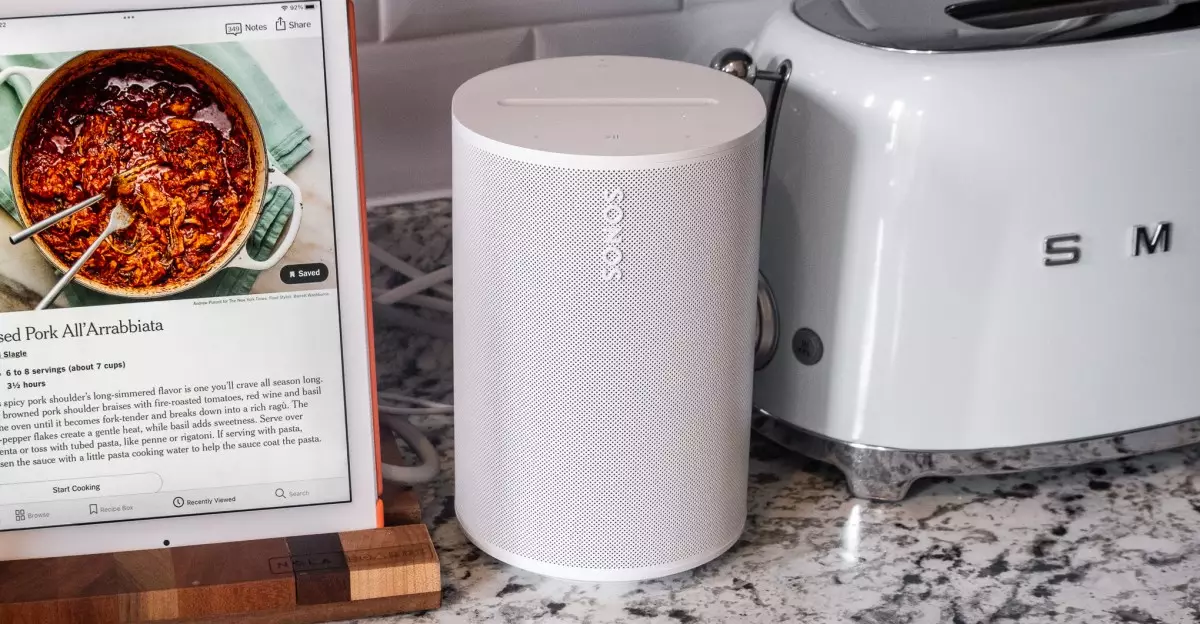In a bold move to rekindle consumer interest amid challenging market conditions, Sonos has slashed the prices of its Era 100 smart speaker and Ray soundbar to an attractive $199 each. This significant adjustment reflects not only a $50 price reduction for the Era 100, which initially hit the shelves at $249, but also an $80 drop for the Ray, previously launched at $279. Although savvy shoppers had often found these devices at lower prices during periodic sales, this recent decision signifies a permanent shift that aims to enhance affordability and accessibility for a broader audience.
Results Over Features: Evaluating the Era 100
The Era 100 stands as a clear embodiment of Sonos’ commitment to delivering high-quality audio at a reasonable price. By enhancing its predecessor, the Sonos One, the Era 100 offers notable advancements, including improved stereo sound, Bluetooth functionality, and more user-friendly physical controls. Priced appropriately at $199, it transforms into a compelling entry point for those curious about integrating smart speakers into their homes. Indeed, this pricing strategy fosters an encouraging environment for potential customers who have yet to explore the advantages of the Sonos ecosystem, making it an appealing option for audio enthusiasts and casual listeners alike.
The Ray’s Value Proposition Amid Limitations
On the other hand, the Ray soundbar invites a different perspective. Despite its significant price reduction, which may pique interest, the soundbar lacks some critical features found in its more expensive siblings, the Arc Ultra and Beam (Gen 2). Most notably, its absence of HDMI connectivity signifies a disconnect from the evolving standards of modern home theater systems—particularly the exclusion of Dolby Atmos support. However, Sonos’ marketing of the Ray highlights its role as a practical upgrade over standard TV speakers, making it an excellent choice for smaller rooms or secondary setups. While its intended purpose as a soundbar is sometimes overshadowed by users finding creative applications, such as using it as a desk speaker, its functionality in niche settings cannot be dismissed.
Sonos Under Pressure: A Call for Innovation
This price adjustment comes at a time when Sonos is grappling with heightened market competition and an urgent need for revitalizing its product lineup. Following a series of setbacks, including an underwhelming mobile app performance that led to customer dissatisfaction, the company seems to be realigning its focus toward core product development. By halting the release of a much-anticipated streaming video player, Sonos acknowledges the pressing need to prioritize enhancements and reliability in its existing offerings.
Furthermore, the company’s continued efforts, exemplified by regular software updates and maintaining transparency via a public Trello board, signify a dedication to regaining consumer trust. While the initial public reception to the Ray may have fallen short of expectations, the new pricing strategy could indeed act as a catalyst for renewed interest, providing consumers with compelling, practical audio solutions without straining their wallets. The question remains: will consumers embrace the more accessible Sonos products amid an evolving landscape of smart audio technology? Only time will tell.

